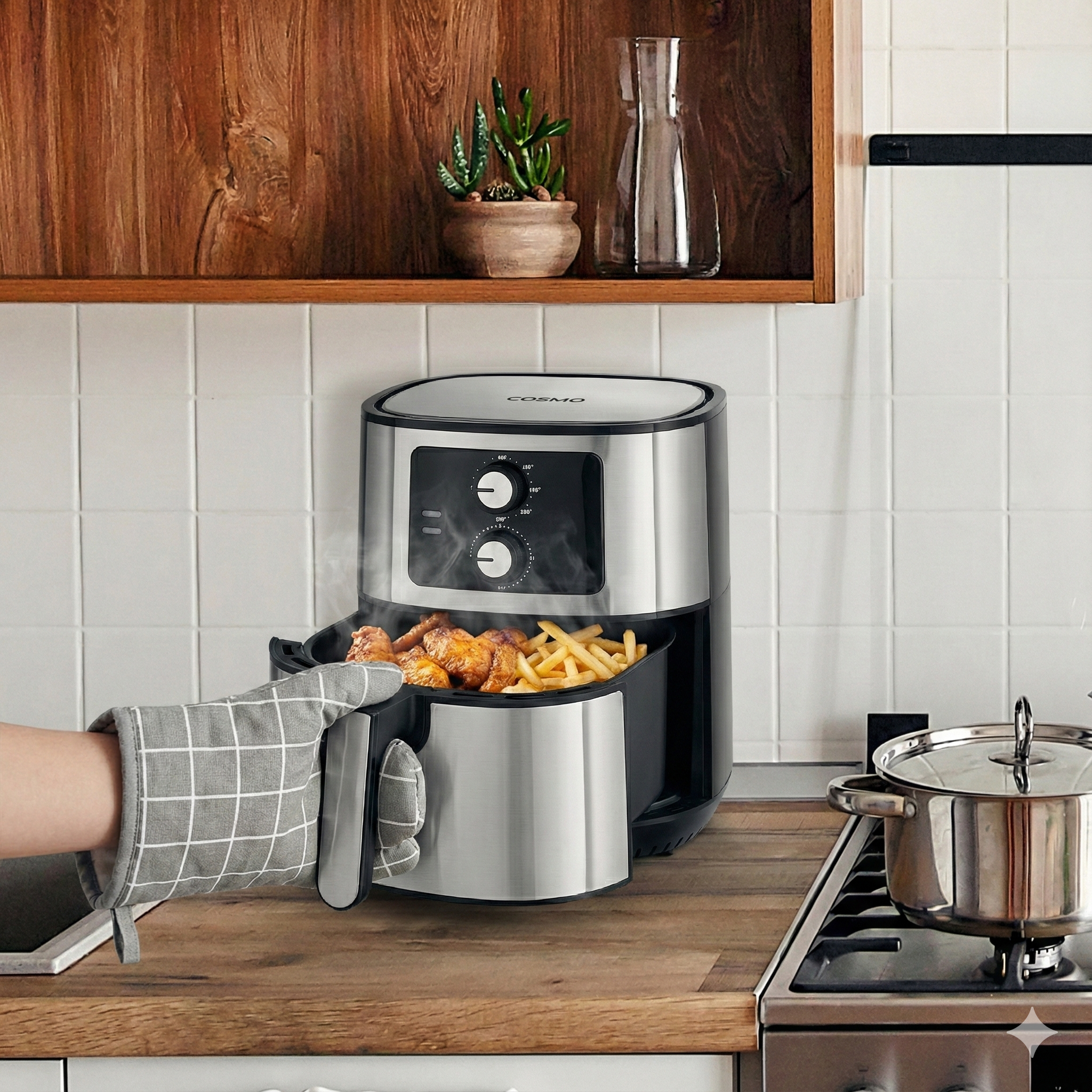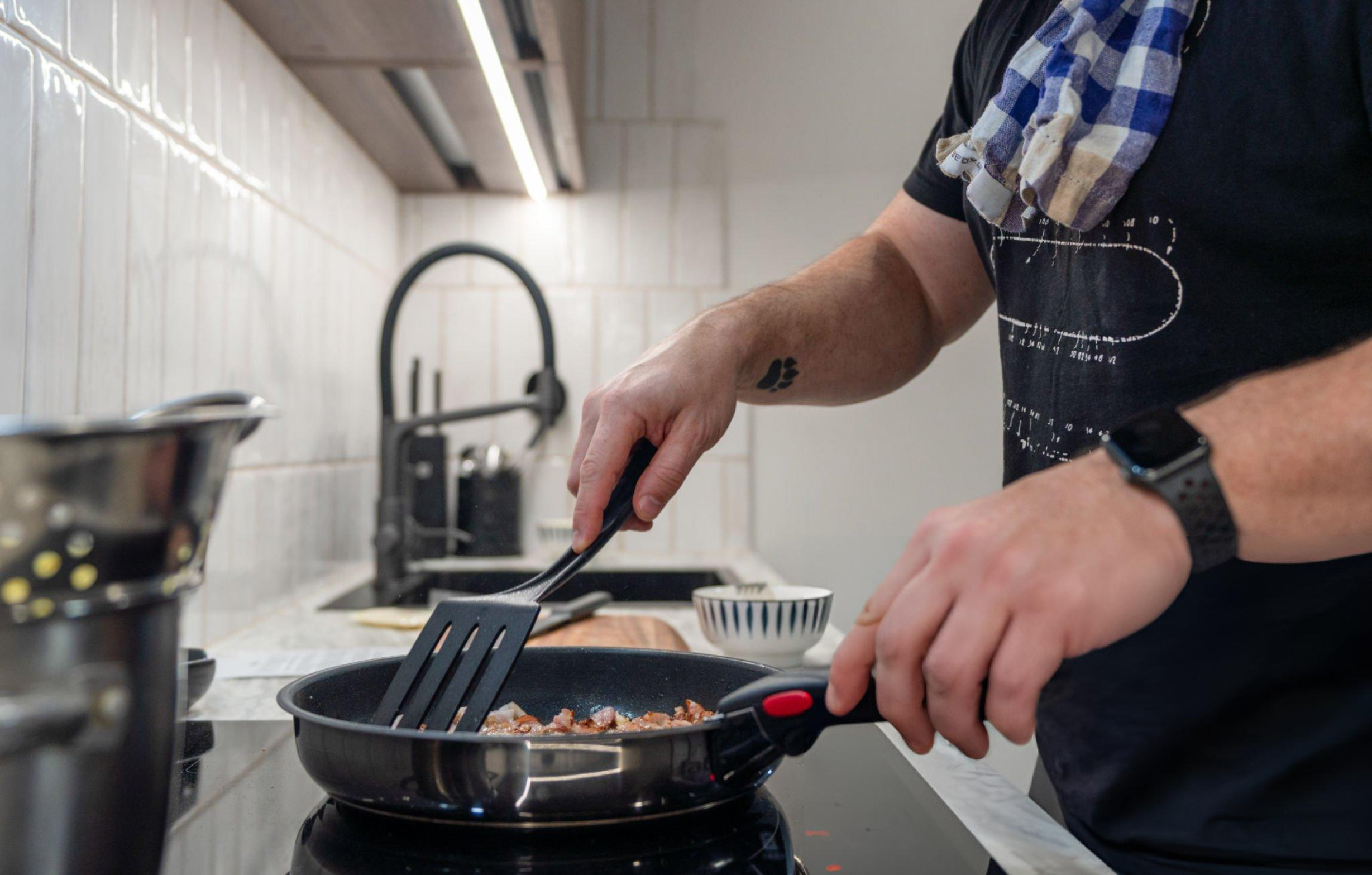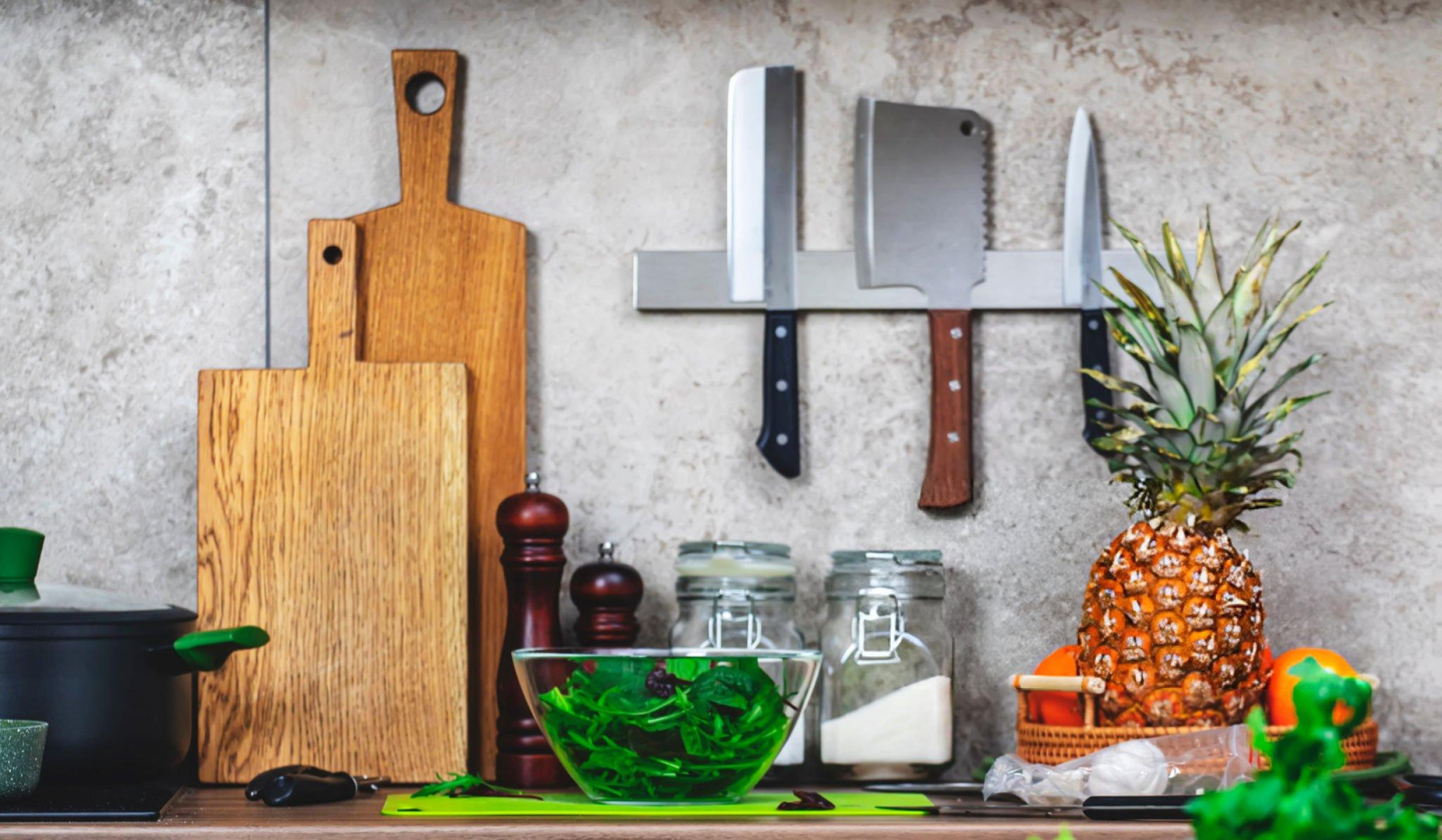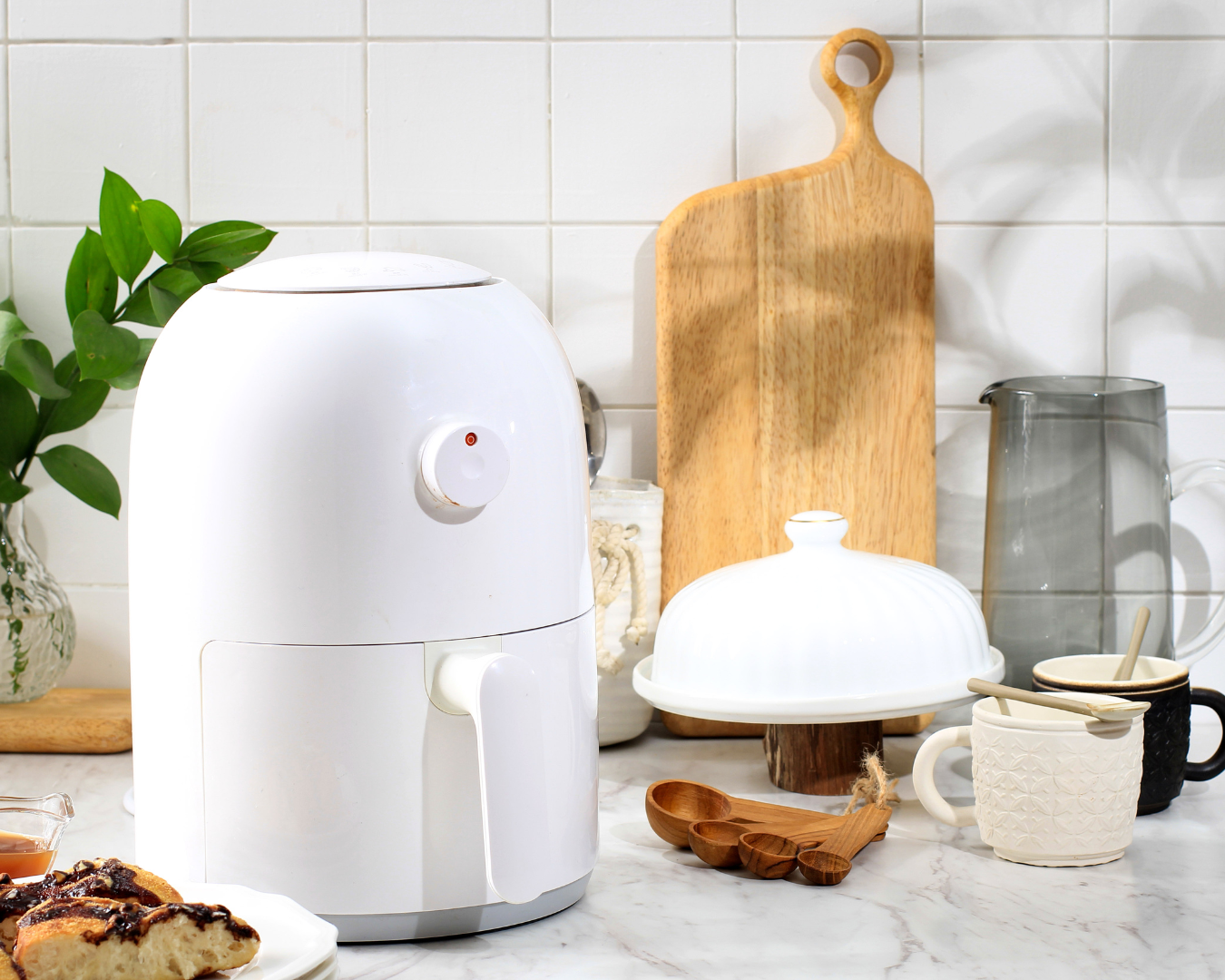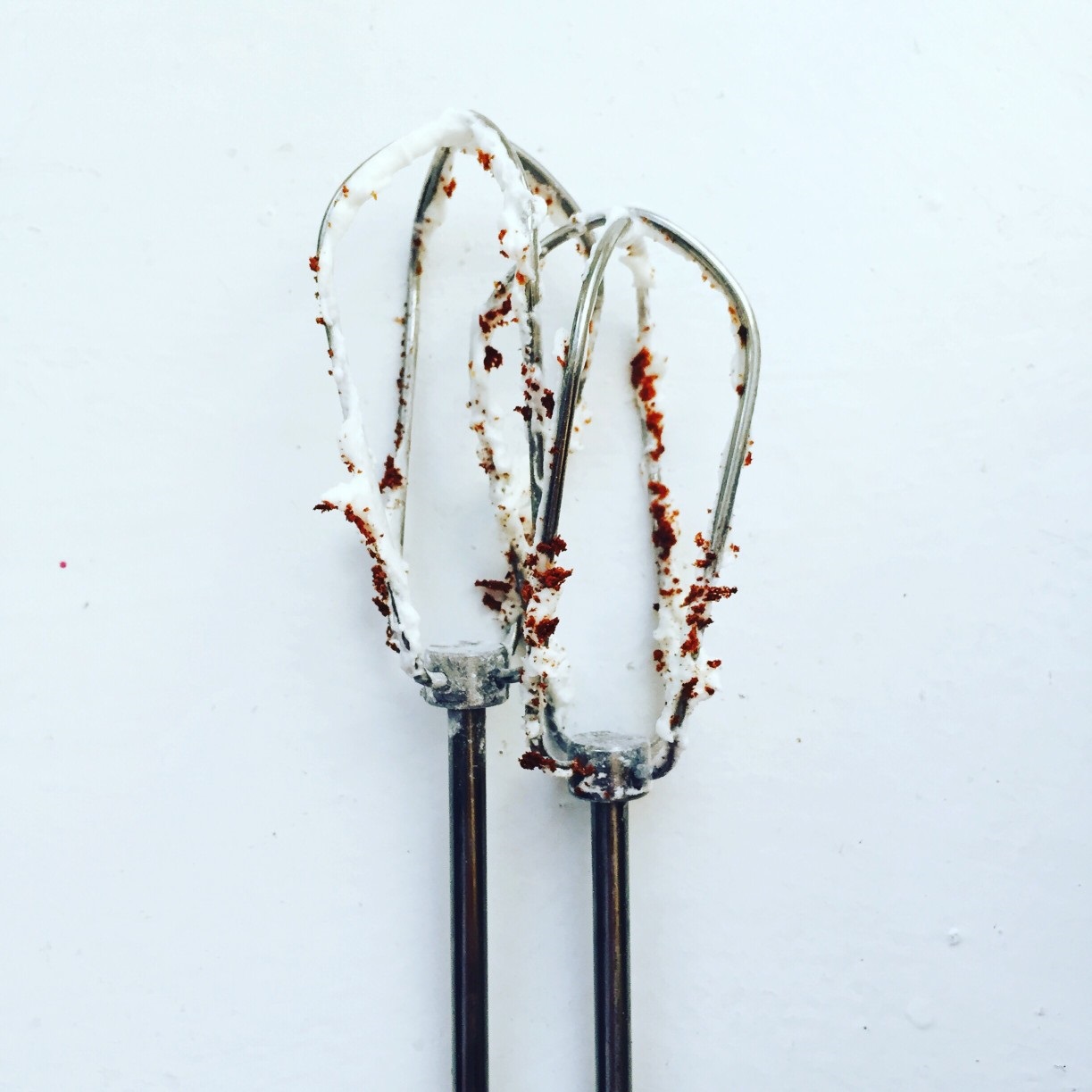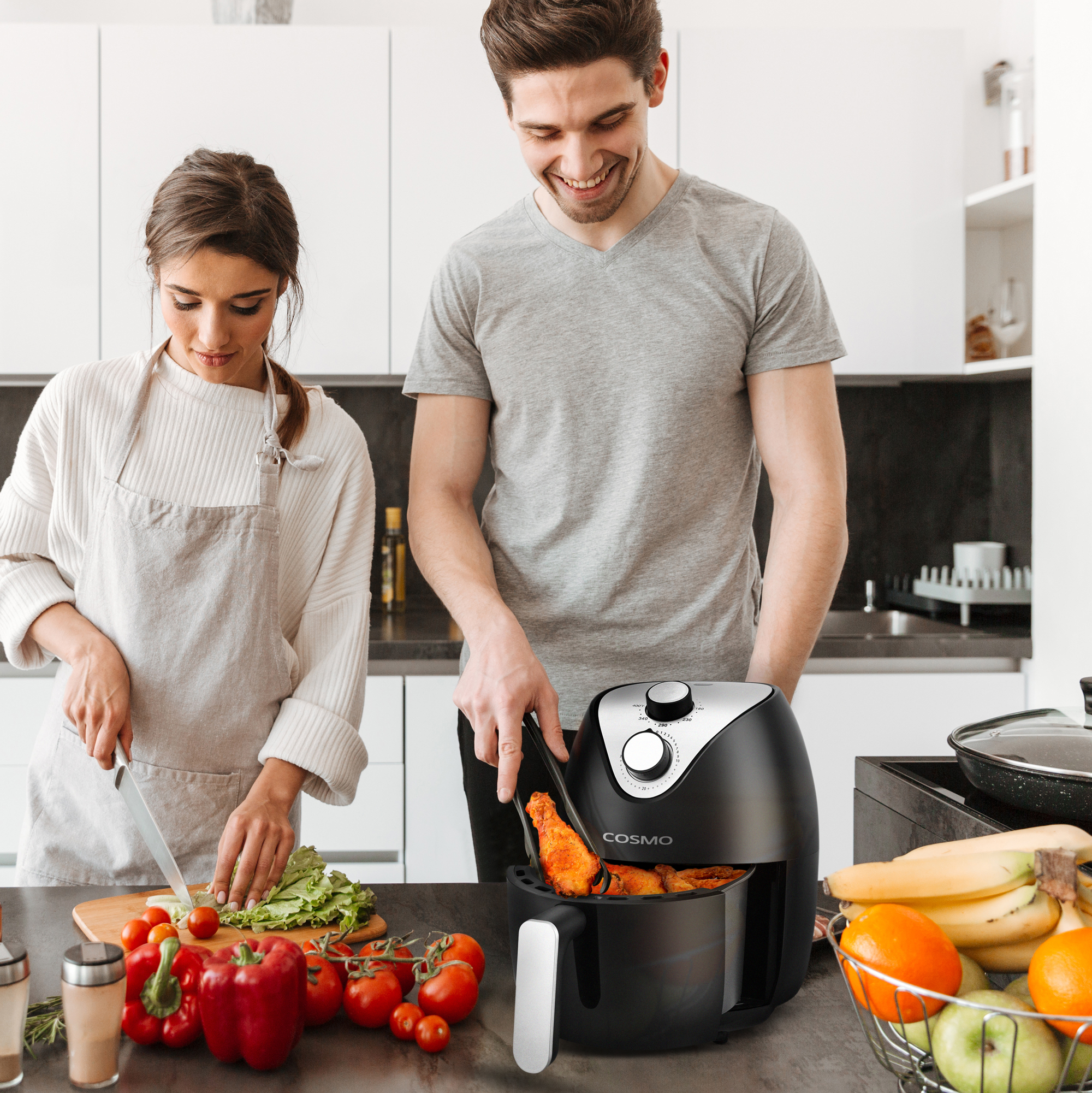The COS-58AFAKSS Air Fryer: 5.8 Quarts of Crispy, Healthy Cooking
Air fryers have transformed home cooking by delivering the crispy, golden textures of deep frying without submerging food in oil. The COS-58AFAKSS 5.8-quart air fryer brings this technology to your countertop in a size that’s perfect for families while remaining compact enough for typical kitchen storage. With simple knob controls, a wide temperature range from 180°F to 400°F, and non-stick coated parts, this air fryer makes healthier cooking accessible without complicated interfaces or extensive cleanup. The 5.8-quart capacity represents the sweet spot for many households – large enough to cook a whole chicken or make sides for 4-6 people, but not so oversized that it dominates your counter or becomes difficult to store. The stainless steel finish adds a modern, clean look while the straightforward operation means anyone in your family can use it confidently without consulting the manual every time. Why 5.8 Quarts Is the Perfect Size Capacity in air fryers significantly affects what you can cook and how many people you can serve. The 5.8-quart size of the COS-58AFAKSS provides genuine versatility without the bulk of larger models. Family meal preparation becomes practical with 5.8 quarts of cooking space. You can make chicken breasts for four people, cook enough french fries for the family, or prepare a full pound of wings without crowding. This capacity eliminates the need for batch cooking that smaller 3-quart models require while avoiding the excess size of 7+ quart units. Whole chicken cooking fits comfortably in a 5.8-quart basket, opening up one of air frying’s most impressive capabilities. A 4-5 pound chicken cooks beautifully, developing crispy skin while staying juicy inside – something that’s impossible in smaller air fryers. Side dish preparation for family dinners works excellently at this size. Roasted vegetables for 4-6 people, a full pound of frozen fries, or several servings of chicken tenders all fit without excessive stacking that prevents proper air circulation. Counter space requirements remain reasonable with the 5.8-quart size. The unit is substantial enough to be useful but not so large that it becomes a permanent fixture taking up excessive counter real estate. Storage flexibility improves compared to larger models. Most cabinet spaces accommodate a 5.8-quart air fryer, while 7+ quart models often become too bulky for convenient storage when not in use. Single-layer cooking becomes possible for most foods, ensuring the even crisping and browning that makes air fryers so appealing. Overcrowded baskets in smaller air fryers compromise results, while 5.8 quarts provides adequate space for proper air circulation. Simple Knob Controls That Work The COS-58AFAKSS uses straightforward knob controls for both temperature and time, eliminating the learning curve of digital interfaces while providing all the control you actually need for successful air frying. Temperature control knob adjusts from 180°F to 400°F in a continuous dial, giving you precise control over cooking heat. The wide range handles everything from dehydrating at low temperatures to achieving crispy exteriors at maximum heat. Timer knob sets cooking duration from 0 to 30 minutes with easy-to-read markings. The mechanical timer counts down audibly, providing a clear alert when cooking completes without requiring you to monitor a digital display. No confusing presets or programs means you simply set the temperature and time based on what you’re cooking. This simplicity makes the air fryer accessible to everyone in your household without memorizing button sequences or navigating menus. Visual feedback from knob positions lets you see settings at a glance from across the kitchen. You don’t need to be right next to the unit to check whether it’s on or what temperature it’s set to. Reliable mechanical operation means the controls continue working even if electronic systems fail. The simple mechanism is proven, durable, and unlikely to require replacement or repair. The tactile operation of knobs provides satisfying feedback and precise adjustment. You can make small temperature or time changes easily without the frustration of buttons that require multiple presses to reach desired settings. 180°F to 400°F Temperature Range The wide temperature range of the COS-58AFAKSS supports diverse cooking applications beyond just making things crispy, expanding the air fryer’s usefulness in your kitchen. Low temperature settings from 180°F to 250°F work excellently for dehydrating fruits, vegetables, or making jerky. The gentle heat removes moisture without cooking foods, creating concentrated flavors and preserved foods. Moderate temperatures from 250°F to 325°F suit reheating leftovers, warming bread, or cooking delicate foods that burn easily at high heat. These mid-range settings provide versatility that many air fryer recipes require. High heat from 325°F to 375°F represents the core air frying range where most recipes perform best. This temperature zone creates the crispy exteriors and properly cooked interiors that make air frying so appealing. Maximum heat at 400°F delivers the intense cooking that produces deeply browned, crispy results on foods like wings, fries, and breaded items. This high heat mimics deep frying conditions while using minimal oil. Temperature flexibility allows you to adapt recipes from various sources. Whether a recipe calls for 350°F, 375°F, or 385°F, you can dial in the exact temperature needed rather than being limited to preset options. The ability to adjust temperature mid-cook gives you control over browning and cooking progression. Start high to crisp exteriors, then lower temperature to finish cooking through without burning. Auto Shut-Off Safety Feature The built-in auto shut-off provides peace of mind by ensuring the air fryer stops cooking when the timer completes, preventing overcooking and potential safety hazards. Automatic shutoff when the timer reaches zero means you don’t need to rush back to the kitchen the moment cooking completes. The unit safely stops heating while the timer alerts you audibly. Burn prevention becomes automatic since the heating element deactivates when time expires. Foods won’t continue cooking and potentially burn if you’re delayed getting back to the kitchen. Energy efficiency improves since the air fryer doesn’t continue consuming power after cooking completes. The auto-shutoff prevents unnecessary energy use while protecting your food from overcooking. Safety during busy cooking sessions benefits from auto-shutoff that prevents the unit from

